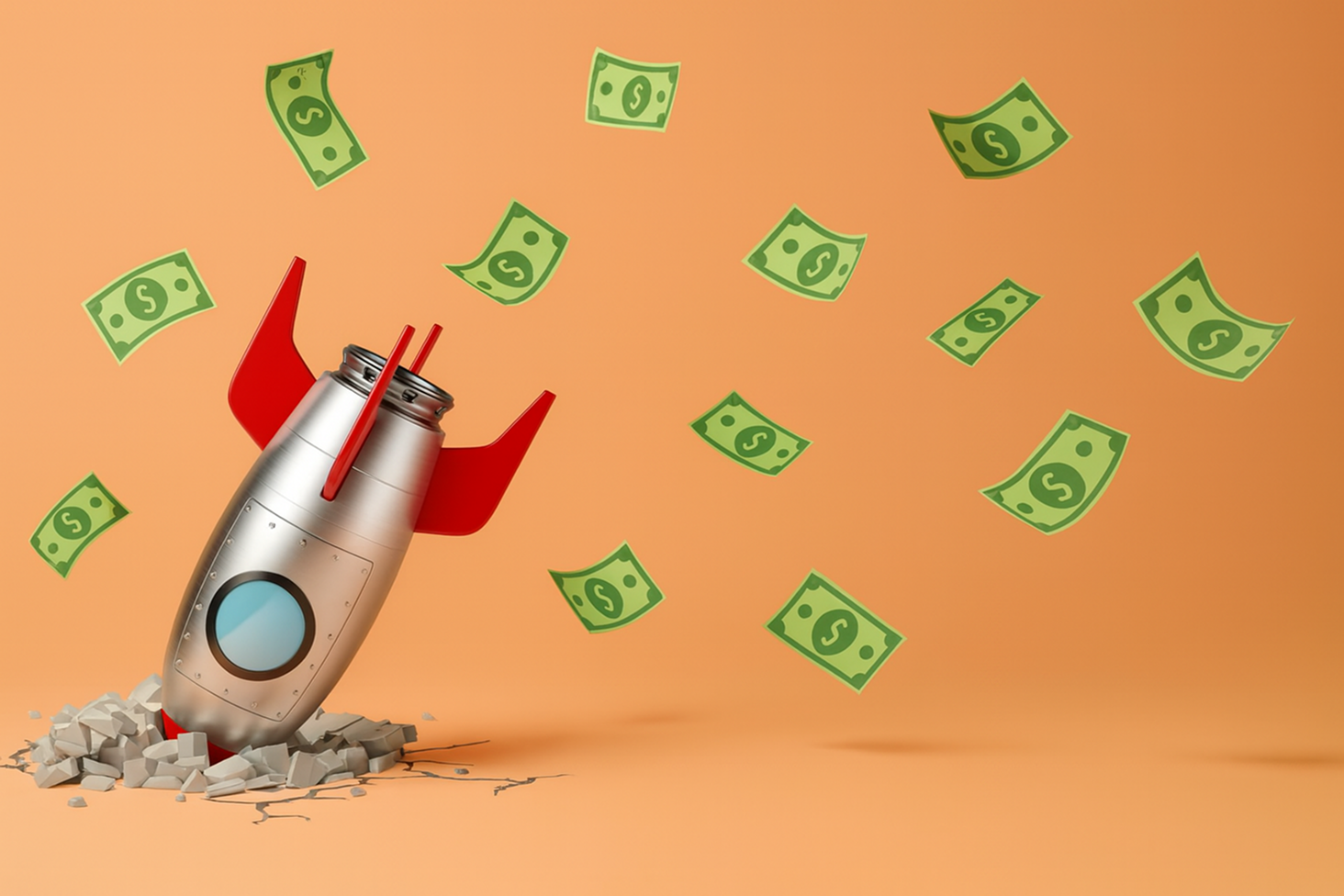

Picture this: Your competitor just raised their Series A and immediately ramped Google Ads to $15,000 per month. They're generating 200 leads monthly and feeling unstoppable. Six months later, market conditions shift. VCs delay funding rounds. That same competitor slashes their ad budget to $5,000, and their leads instantly drop to 65. Revenue crashes. Team cuts follow.
This exact scenario is playing out across hundreds of startups right now. Gartner's CMO Survey found that 30.6% of marketing budgets are allocated to paid media, creating dangerous dependency on platforms beyond your control.
Meanwhile, their organic competitor keeps growing with zero ad spend. They built something fundamentally different: traffic that compounds rather than disappears.
The runway killer isn't just the monthly cost. Every dollar spent on Google Ads delivers exactly one thing: temporary visibility that vanishes the moment you stop paying.
Your $15,000 ad spend in January generates leads in January. Your $15,000 ad spend in February generates leads in February. There's no carryover effect, no building momentum, no appreciating asset.
Consider what you're actually buying. Google's Performance Max campaigns operate as "black boxes" where founders have limited control over targeting, bidding, or optimization. Here's why this matters:
You're not building marketing assets. You're renting temporary visibility that disappears the moment funding pressures force budget cuts.
The scaling trap compounds the problem. Unlike organic traffic that gets more efficient over time, paid ads often see diminishing returns as budgets increase. Your first $5,000 monthly might generate leads at $50 each. Your next $10,000 often pushes that cost to $75 or higher as you exhaust high-intent audiences and move into less qualified traffic.
10Fold's 2025 CMO survey found that 56% of companies reported marketing budget increases, but these increases were typically modest at under 20%. Translation: Most startups can't solve performance problems by simply spending more money.
Every dollar spent on ads is a dollar that doesn't compound. Meanwhile, competitors building organic traffic create assets that appreciate over time.
While competitors burn through ad budgets, smart founders build compound growth engines that work 24/7 without additional cost. The academic research backing this strategy is overwhelming:
The secret lies in creating appreciating assets rather than depreciating expenses. Every piece of content you publish, every keyword you rank for, every backlink you earn becomes part of a traffic machine that compounds value over time.
Most startups see:
Content published today generates leads this month, next month, and next year. Rankings achieved this quarter protect market share while competitors fight bidding wars. Authority built through consistent publishing becomes increasingly difficult for competitors to match.
Series A startup built their entire lead generation on a $20,000 monthly Google Ads spend. Economic headwinds hit. Their funding round gets delayed six months. Ad budget gets slashed to $8,000 to preserve runway.
Their organic competitor faces the same market conditions but experiences the opposite outcome. As paid competitors disappear from search results due to budget cuts, organic rankings actually improve. Traffic increases. Lead quality improves as less competition means higher-intent visitors.
While ad-dependent startups scramble to maintain lead flow, organic competitors gain market share by default. U.S. Small Business Administration trends data for 2025 shows that funding delays and budget constraints are becoming more common across all startup stages. Recent data shows 41% of all venture capital dollars are now going to just 10 companies, making strategic allocation more critical than ever.
The math is simple: Paid traffic requires constant feeding. Organic traffic feeds itself through compound growth and improved authority. When every dollar of runway matters, the difference between renting and owning your lead generation becomes existential.
The startups that survive these periods are those with revenue sources independent of continuous cash infusion.
The survivor advantage extends beyond just weathering downturns. Startups with organic traffic enter the next funding round from a position of strength, demonstrating sustainable growth and efficient capital deployment, exactly what investors want to see in uncertain markets.

The most successful startups don't just survive market downturns. They use strategic periods to build unstoppable momentum while competitors retrench.
Strategic implementation starts with understanding the phases: Organic traffic building delivers results in phases: initial traction within 3 months, then positive ROI within 6-12 months as authority builds and rankings improve.
In practical terms, this means focusing on fundamentals first. Content strategy should target specific problems your audience faces rather than competing for broad, established terms. Each piece of content becomes a permanent asset in your growth engine. The key is specificity over volume. Focus on the exact pain points your ideal customers search for when they're ready to buy.
Technical optimization provides the foundation for sustainable growth. Search engines reward sites that load quickly, display properly on mobile devices, and provide excellent user experiences. These improvements benefit every visitor, not just those from search engines.
Authority building through industry-relevant content establishes your startup as a trusted resource in your market. When prospects research solutions, you want your insights and expertise appearing in their consideration process, not just your competitor's ads.
Modern search isn't just Google anymore. Your organic content needs to perform across AI platforms (ChatGPT, Perplexity, Claude) where potential customers increasingly search for solutions. Unlike paid ads that can't reach these platforms, well-optimized content gets cited as authoritative sources, multiplying your reach without additional spend.
The smartest startups use a strategic allocation model that balances immediate validation with long-term asset building. They allocate 60-70% to immediate needs (which might include minimal paid ads for testing messaging and channels) while investing 30-40% in building organic traffic assets. As organic momentum builds, this ratio shifts naturally toward owned media.
This isn't about choosing between paid and organic. It's about using minimal paid spend for quick learning while building the compound growth engine that eventually makes paid ads optional, not essential.
The strongest competitive position isn't weathering downturns. It's thriving during them while competitors retreat.
Organic traffic creates this advantage by providing steady lead flow that operates independently of funding cycles, market conditions, or budget pressures. Unlike paid campaigns that disappear overnight when budgets tighten, your content library, search rankings, and domain authority continue working 24/7.
This resilience becomes your competitive moat. When funding delays hit your sector, your pipeline stays full while ad-dependent competitors scramble. When economic uncertainty freezes VC decision-making, your growth metrics stay strong while others plateau. The startups that emerge from downturns as category leaders are those who built sustainable traffic sources rather than renting temporary visibility.




RankScience LLC
2443 Fillmore St #380-1937,
San Francisco, CA 94115
© 2025 RankScience, All Rights Reserved